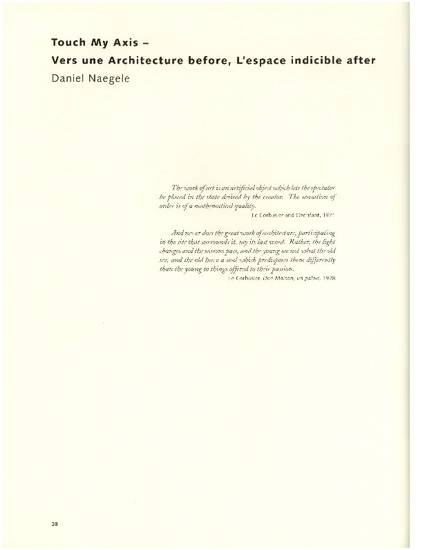
In 1946, shortly after the end of the Second World War and as the rebuilding of Europe began, in a special issue of a professional architectural journal dedicated to the synthesis of the arts, Le Corbusier, perhaps the world's most influential architect at the time, published a short, seemingly innocuous treatise titled "L'espace indicible." It opens with the author recognizing nature's "harmonious orchestration of space" as entirely phenomenal, as "the reflection of light." Ineffable space is, Le Corbusier writes, a "vibration" between the "action of the work (architecture, statue, or painting)" and the "reaction of the setting: the walls of the room, the public squares ... the landscape." It is a "phenomenon of accordance ... as exact as mathematics, a true manifestation of plastic acoustics."
Available at: http://works.bepress.com/daniel_naegele/35/

This chapter is from What Moves Us? Le Corbusier and Asger Jorn in Art and Architecture (Zurich, Switzerland: Scheidegger & Speiss, 2015). Posted with permission.